1868: The First “Big One”
The "great San Francisco earthquake" of 1868 and the next one on the way.
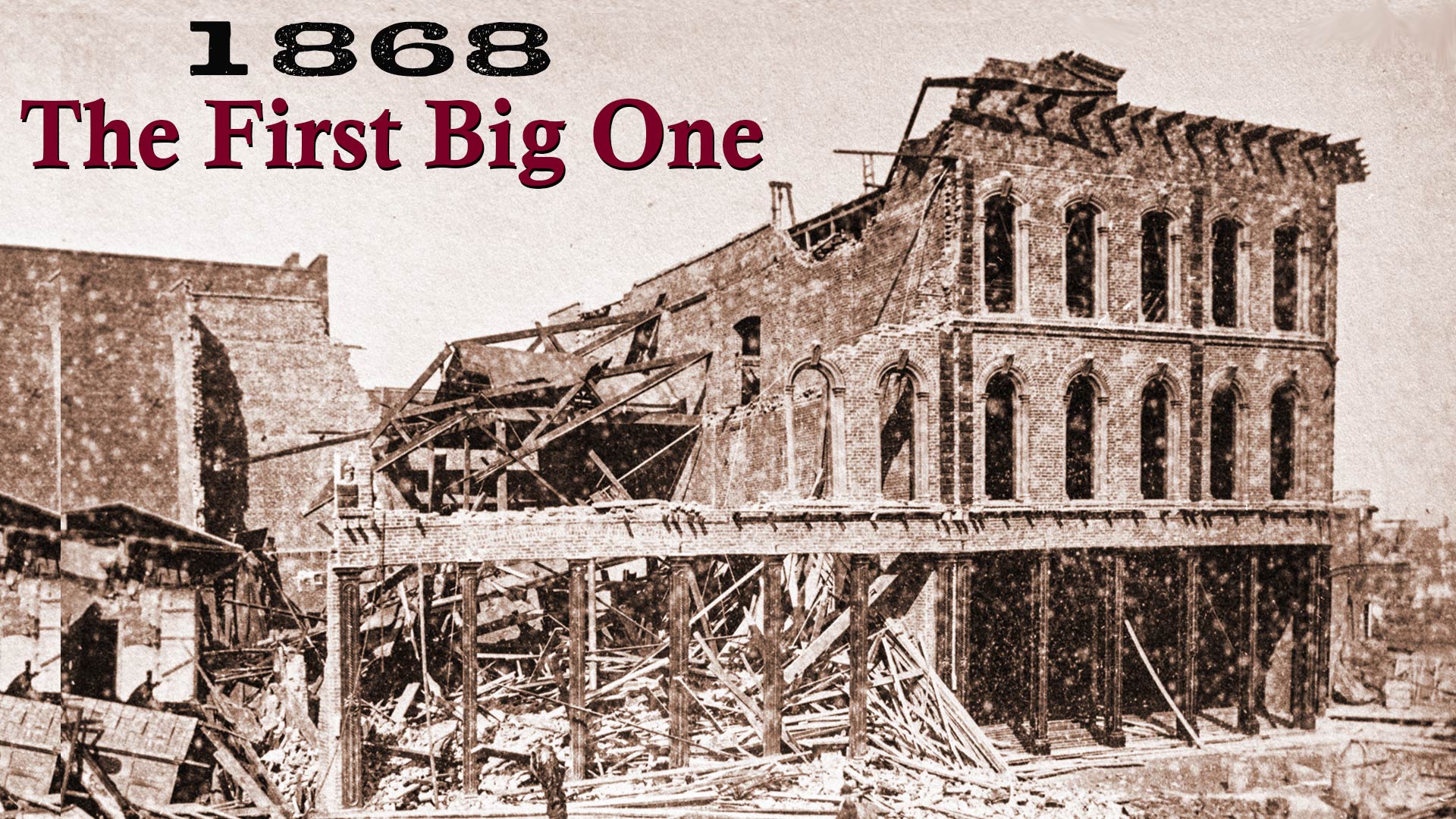
Our family were seated at the breakfast table on Lombard Street, when we became suddenly alarmed by a deep rumbling noise like a pack of artillery going over the ground. Then came a terrific jar, and an undulating motion which set everything moving, swinging, or creaking. Glasses, dishes and decanters were shaken from the sideboard and thrown to the floor. We all rushed out into the street, where crowds of people could be seen, like ourselves, seeking safety in the open air, with horror and consternation depicted in their faces. — Edward Bosqui
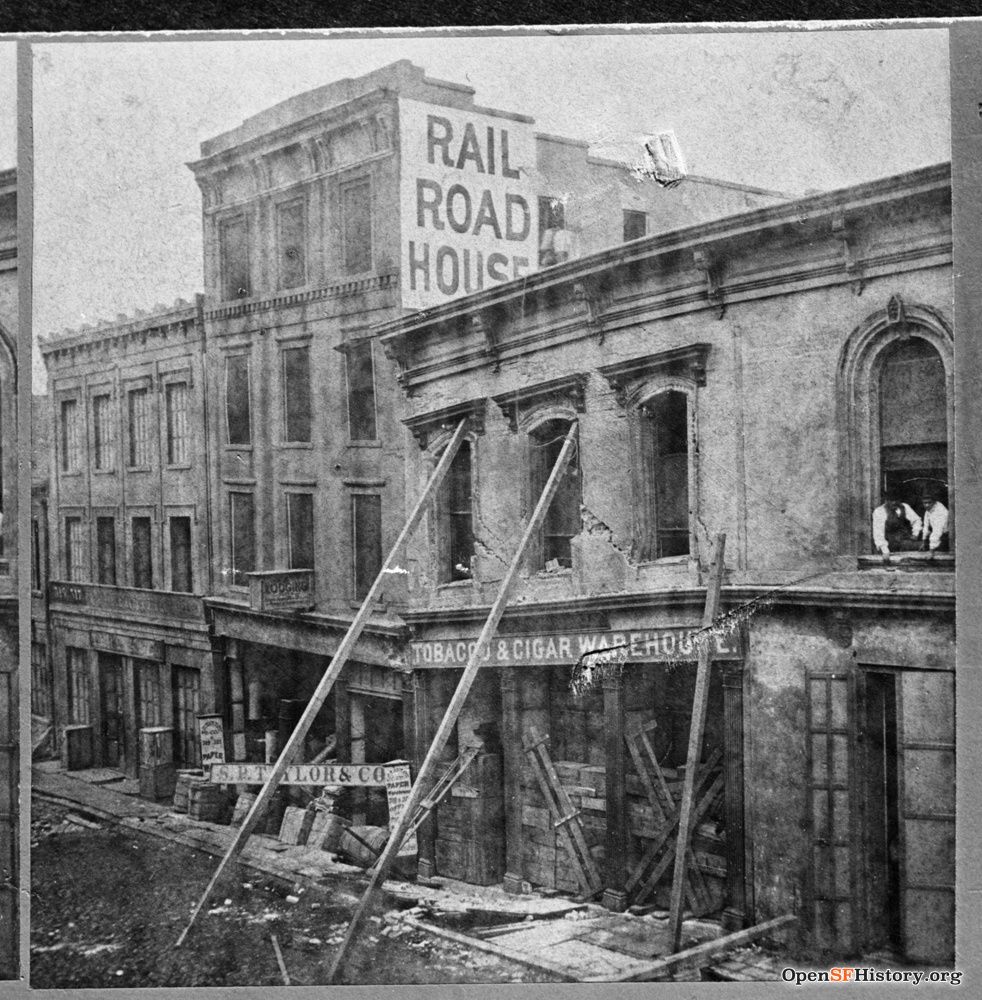
We San Franciscans often call the April 18, 1906 earthquake the “Big One,” usually in talking about preparation for the next big one. But to an old-timer walking on Market Street on April 17, 1906, the Big One had been two generations past, when an estimated 6.8 magnitude earthquake shook the city on October 21, 1868. This Friday is the 154th anniversary.
Earthquakes were noted before the arrival of the Americans with a major one in 1836, and another damaging buildings around Mission Dolores and the Presidio in 1838. Significant earthquakes also struck in 1857 and 1865. But San Francisco continued to put up masonry buildings (good against the frequent fires, bad in seismic events) and expand into unstable “made ground” of filled-in creeks, marshes, and bay wetlands.
Hitting a bit before 8:00 a.m., the October 21, 1868 earthquake killed five people in San Francisco, injured another two score, and inflicted $400,000 in property damage, mostly in areas reclaimed from the old Yerba Buena cove. Frightened horses charged through dry goods store windows, sidewalks caved in, California Street erupted with fissures, and collapsing brick walls crushed men.
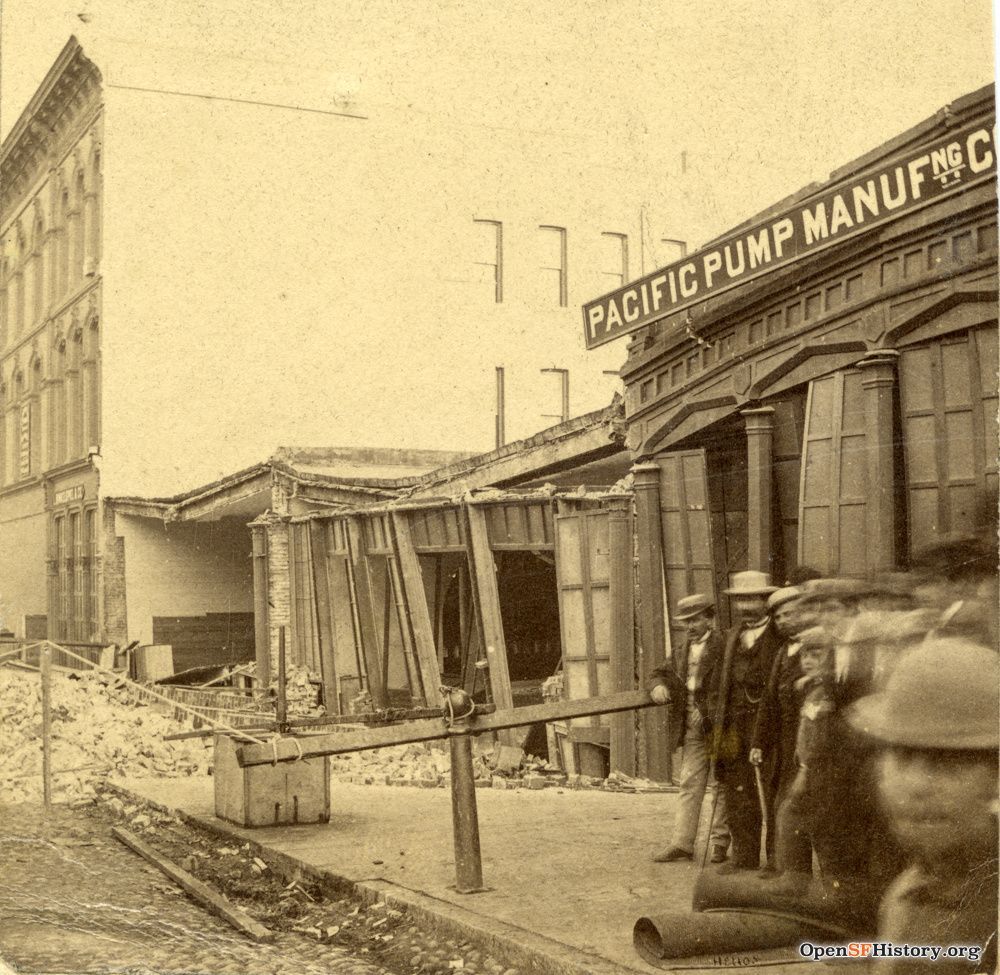
Louis Laurent Simonin was taking a bath in a hotel when it hit. He rushed out of his room half-dressed, and he wasn’t alone: “[T]he hotel guests, panic-stricken, terrified, screaming and gesticulating wildly, were crawling down the stairs on all fours: the women in their nightclothes, with hair unkempt, the men in their bathrobes and, for the most part, barefoot…”
The Rail Road House hotel, the S. P. Taylor & Co. paper company, and a tobacco warehouse along Clay and Commercial Streets were some of the most dramatically affected. Edward Bosqui ran down to his office in the vicinity: “Two dead bodies were discovered under the debris of the coping and fire-walls which had fallen on them on Clay Street, nearly opposite our office; and farther down the street, between Sansome and Battery, another body was found under similar circumstances.”
Although it would be known until 1906 as “the great San Francisco earthquake,” the event did far more damage in other Bay Area locales. The quake epicenter was on what geoscientists call the Hayward Fault, which runs roughly north-south on the east side of San Francisco Bay. The town of Hayward was flattened by the 1868 quake, but thankfully only had about 500 people living in it at the time.
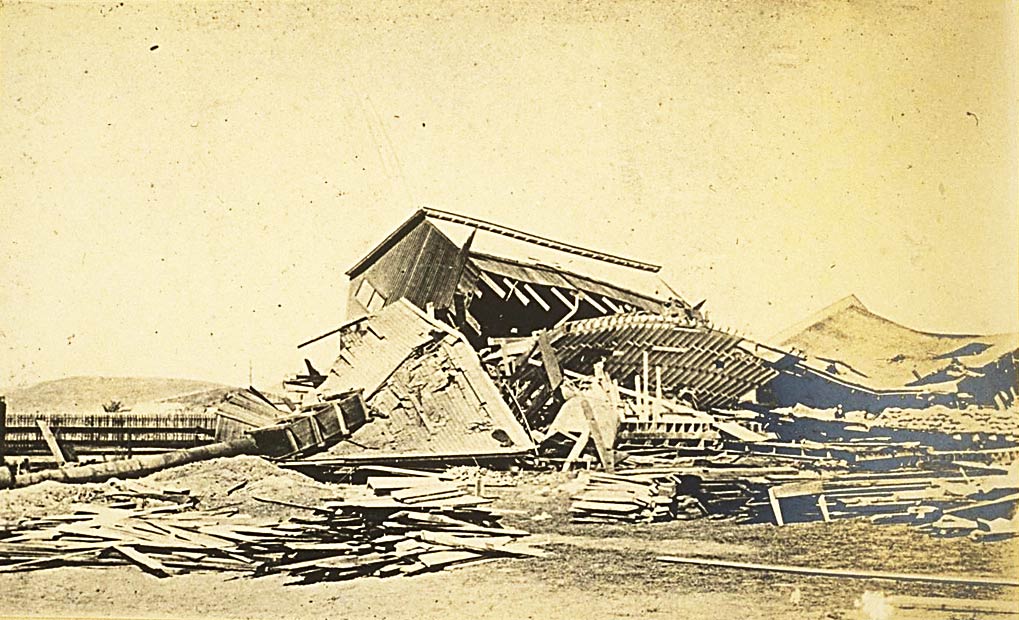
Bosqui remembered that “Many people were so frightened by the shocks that they were ill for days afterwards.” Some settled their affairs and left San Francisco forever. But memories are short. San Francisco continued to grow and build as the morning of October 21, 1868 faded from public consciousness. Bosqui wrote in 1904, “I have often thought how strange and incomprehensible it is that such a terrible visitation and its consequences should be almost forgotten in less than one generation.” Two years later, the 1906 earthquake spanked the city with a scathing and deadly reminder.
It’s a lot like 1904 right now. We’re more than a generation from the last major earthquake, which also took place in October. Like Monsieur Simonin, my roommate Marty was in the bath when the Loma Prieta “World Series” earthquake struck on October 17, 1989. He too ran out, wild-eyed, wearing only a towel.
As seismologists and emergency preparedness folks tells us, we are overdue, especially in regards to the Hayward Fault, which has produced 12 big earthquakes in the past 2,000 years, each spaced 100-220 years apart. And unlike 1868, millions now live and work along the fault today. The USGS calls the situation a “tectonic time bomb.”
The major San Francisco earthquake anniversaries in April and October are six-month reminders to refresh and replenish your personal earthquake kit. Go to www.sf72.org to get a supplies checklist. Change the batteries, switch out the gallons of emergency water, get prepared.
Really, are you ready? The next Big One could happen the minute after you finish reading this sentence.
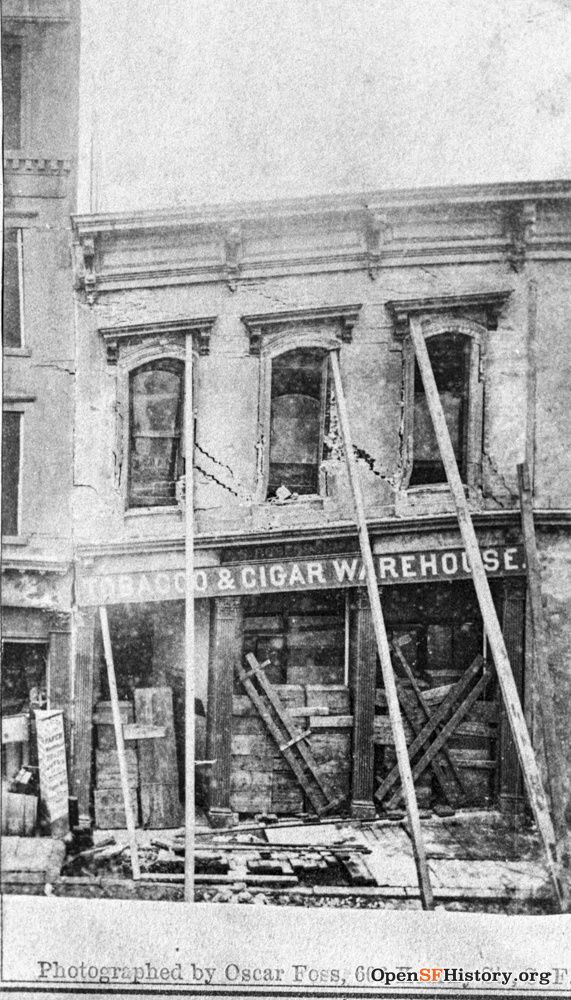
Sources
Translation of Simonin’s memories are from Malcolm E. Barker’s great book, More San Francisco Memoirs, 1852-1899, The Ripening Years,” (San Francisco: Londonborn Publications, 1996), pg. 183.
Edward Bosqui, Memoirs, 1904, pgs. 208–213. (Digitized and available on the Internet Archive website.)

